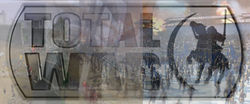Tactics
Tactics, the art of organizing an army, are the techniques for using weapons or military units in combination for engaging and defeating an enemy on the battlemap. Changes in philosophy and technology in the Total War Series have been reflected in changes to military tactics.
Contents
History
As the setting and unit types in each new Total War game changes, so do the tactics used by players. The complex system of tactics directly affects the Total War formula and the way battles in each game are fought.
With its debut in 2000, Shogun: Total War allowed players to resolve military conflicts themselves through the battle map. As shown throughout this game, the Art of War by Sun Tzu featured heavily and encouraged players to use superior tactics to outwit their enemy. A rock-paper-scissors system, a staple of real-time strategy games, was in place and dictated what units would be used to counter what. However, unlike other contemporary strategy games at the time, Shogun: Total War featured an arguably realistic unit morale and fatigue system, allowing for much more complex usage of military tactics. Players could not run their cavalry across the entire map, because the fatigue system made the cavalry slow and tired, and the morale system exploited this and lowered unit morale due to unit fatigue.
Medieval: Total War was released in 2002 and added a new feature to the Total War formula, the addition of siege battles. Siege battles in Shogun: Total War could be called glorified field battles, with always-open gates and much space around the besieged, but in Medieval: Total War, things took on a different turn, and introduced large, fortified castles, with walls which the defender could place archers and a gate that had to be destroyed by attackers. Attackers had to use climbing ladders, ropes, battering rams, and siege towers to fight their way to a flag, which if they held for a certain amount of time, they captured the castle.
With the release of Rome: Total War, the strict morale and fatigue systems were loosened quite a bit, and now cavalry were faster and much more mobile. Special abilities of units were introduced, meaning units such as legions coudl form special formations such as the testudo, or intimidate nearby enemies with the ability War Cry. However, this addition of extra features dumbed down the game's AI for some time, not kknowing how to use these abilities.
Empire: Total War's debut signaled the introduction of a long-awaited feature, and one that would change the Total War formula once again; Naval Warfare. Players could control fleets of several gun-bearing ships in battles on the open seas. The movement of large, sail-powered ships relied on the movement and direction of the wind. Some ships, however, could travel under their own power, such as steamships or galleys.
The introduction of naval battles confused the long-used rock-paper-scissors system. In land battles, there were 3 distinct categories of units; in naval battles, there were 2, fast ships and heavy ships, and generally, unlike Land Warfare, each could defeat the other. The usage of ship crews and the ability to board ships also complicated things, and the complex tactics system became even more complex.
Concept
Total War is a game of the strategy genre. This means that players must utilize strategy and analyze their surroundings to triumph over their opponents. Although each game introduces new features, the fundamentals of land Warfare and Naval Warfare tactics remain the same.
Fundamentals
Land Warfare in Total War has always relied on the ages-old rock-paper-scissors system of real time strategy games, while throwing in units of exception for sake of the Total War formula. The system is generally as follows:
Cavalry defeat missile units, which defeat slow spearmen; Spearmen defeat cavalry.
However, there is more to land warfare in Total War than this system dictates. Battles in the first 4 Total War games were generally fought in five stages, with each stage directly affecting the outcome of the next:
- Maneuver war---> Missile war---> First charges---> Melee Slugout ---> Endgame mop up/Opponent admits defeat
Likewise, in the gunpowder-era games, Empire: Total War and Napoleon: Total War, Land battles take place in several stages:
- Pre-battle Maneuver war---> Skirmisher foreplay---> Infantry shootout ---> Flanking maneuver war---> Endgame mop up/Opponent admits defeat
On the other hand, Naval Warfare, introduced in Empire: Total War, relies only on two factors; morale and wind direction. Players must use wind correctly as long as sail-powered ships are used, and prevent their ships from being lit on fire to keep morale high.
However, with the release of Total War: Shogun 2, islands and peninsulas are to be added to Naval Warfare for fleets to orient themselves around. The focus on melee conflict too, will surely be a factor in naval battles.
Morale
Morale has always been a fundamental of the usage of tactics in Total War. Players must avoid isolating bodies of their troops and use their commander's unit correctly in order to keep their troops' morale in order. Likewise, players can use units' special abilities to deteriorate enemy morale.
In Multiplayer
Tactics have generally held a higher position in Total War multiplayer, as with human-vs-human scenarios, outwitting your opponent becomes harder than ever. As opposed to the game AI, which generally knows only the basics of utilizing choke points, special abilities, and unit attributes, humans generally know how to use superior tactics to outsmart their enemies, whether it be through luring their enemy, skirmishing, or simply overpowering their opponents.
